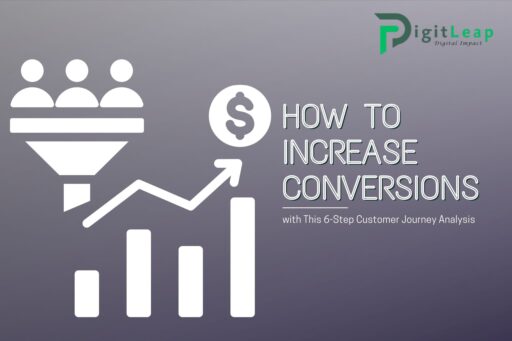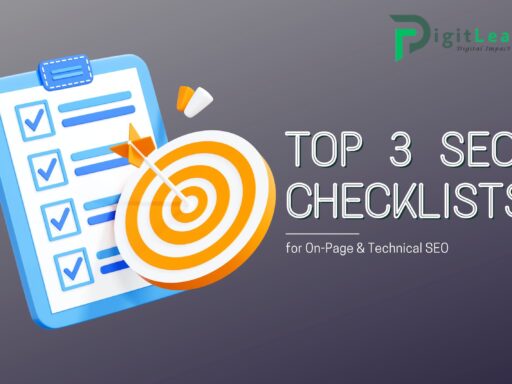How to Increase Conversions with This 6-Step Customer Journey Analysis
The customer journey is the process a person goes through from first discovering your brand to making a purchase (and ideally becoming a repeat customer). Understanding and analyzing this journey is critical to improving conversions. By breaking down each step of the customer journey and optimizing it, you can guide more people toward completing desired actions, whether that’s signing up for your service, making a purchase, or engaging with your content.
In this article, we’ll walk through a simple 6-step customer journey analysis that can help you increase conversions and improve your overall customer experience.
1. Awareness: How Do Customers Discover You?
The first step in any customer journey is awareness. This is the moment when potential customers become aware of your brand or product. This could happen through various channels like search engines, social media, paid ads, or word of mouth.
To optimize this stage, start by analyzing where most of your traffic is coming from. Are customers finding you through Google searches, social media posts, or online ads? Understanding these entry points is key to refining your marketing efforts.
Once you know the main sources of your traffic, focus on enhancing those channels. For example, if search engines are driving most of your traffic, you might want to invest in improving your SEO or running targeted Google Ads. On the other hand, if social media is your biggest driver, focusing on social content and ads can be a game-changer.
By ensuring your brand is visible in the right places and creating content that resonates with your audience, you can bring more people into the first stage of the journey.
2. Interest: What Keeps Them Engaged?
Once a potential customer is aware of your brand, the next step is sparking their interest. This is where they begin exploring your products or services to see if you offer something that matches their needs or desires.
To analyze this stage, take a look at your website’s user experience. Is your content engaging? Are the products or services you offer clearly displayed? Do you provide enough information to capture their interest? This is where website design, user-friendly navigation, and compelling content play a major role.
Ensure that your landing pages are clear and focused. If you’re promoting a specific product or service, make sure the information is concise and targeted to what the customer might need. Use clear, eye-catching visuals and persuasive text to hold their attention.
Also, think about offering educational content, such as blog posts or videos, to nurture that interest and show that you’re an authority in your field.
3. Consideration: Are You Addressing Their Pain Points?
In the consideration stage, customers are weighing their options. They’re likely comparing your offerings to those of your competitors, thinking about features, pricing, and reviews. This is the time when customers are looking for reassurance that your product or service is the right fit for them.
To optimize this stage, think about how you’re addressing customer concerns and questions. Do you have detailed product descriptions, FAQs, and customer reviews? These elements are critical to helping customers feel more confident about their decision.
It’s also a good idea to provide comparison tools or offer demonstrations if possible. For example, if you’re selling software, offering a free trial or demo can give potential customers the opportunity to experience your product firsthand, increasing the chances of conversion.
Think about adding testimonials or case studies that highlight how your product has solved problems for previous customers. This provides social proof and builds trust, making it easier for prospects to choose you over the competition.
4. Conversion: Are You Making It Easy for Customers to Buy?
The conversion stage is where the customer makes the decision to take action, whether that’s making a purchase, filling out a contact form, or signing up for a newsletter. Your goal here is to make the conversion process as smooth and easy as possible.
Analyze your conversion funnel to see where people might be dropping off. Is your checkout process too long or complicated? Are there too many steps involved in signing up for a service? Identify any friction points that might be causing people to abandon their cart or exit the page before completing their transaction.
Make sure your calls-to-action (CTAs) are clear, direct, and placed strategically throughout your site. If you’re selling products, offer multiple payment options to suit customer preferences and make the buying process seamless.
You might also consider adding a sense of urgency with limited-time offers or discounts to encourage quicker decisions. Simplifying the checkout process and making the customer feel secure can go a long way in boosting conversions.
5. Retention: How Do You Keep Customers Coming Back?
Once a customer has made a purchase, your focus should shift to retention. It’s much more cost-effective to retain existing customers than to acquire new ones, so nurturing that relationship is key to long-term success.
To improve retention, consider implementing email marketing campaigns that offer personalized recommendations based on previous purchases. Sending follow-up emails, product care guides, or even exclusive discounts can keep your brand top-of-mind for your customers and encourage them to make future purchases.
Loyalty programs are also an excellent way to retain customers. Rewarding repeat buyers with points or discounts encourages them to come back and buy from you again.
At this stage, customer service is incredibly important. Ensure that your customers have an easy way to reach you if they have any issues or questions after their purchase. Great customer service can turn a one-time buyer into a loyal customer.
6. Advocacy: Are Customers Recommending You?
The final step in the customer journey is advocacy. A loyal customer who loves your product or service is more likely to recommend you to others, which can lead to new leads and conversions. This stage is often overlooked, but it’s vital for long-term growth.
To encourage advocacy, create opportunities for your customers to share their positive experiences. Encourage reviews, testimonials, and social media shout-outs by offering incentives like discounts or free products for referrals.
You can also engage your satisfied customers by building a community around your brand. This could be through a Facebook group, an exclusive club, or simply by encouraging user-generated content on social media. People who feel valued by your brand are more likely to advocate for it.
By turning customers into brand ambassadors, you create a cycle where happy customers bring in new ones, reducing the need for heavy marketing.
Conclusion
Understanding and analyzing the customer journey is crucial for increasing conversions. Each step, from awareness to advocacy, presents opportunities to optimize your strategy and engage customers more effectively. By taking a close look at each stage, you can identify gaps, remove obstacles, and improve the overall experience for your customers.
The key to boosting conversions is ensuring that the path from discovery to purchase is as smooth as possible. Whether it’s improving your website’s user experience, addressing customer concerns, or building loyalty, each step in the customer journey plays a role in creating satisfied, converting customers.






